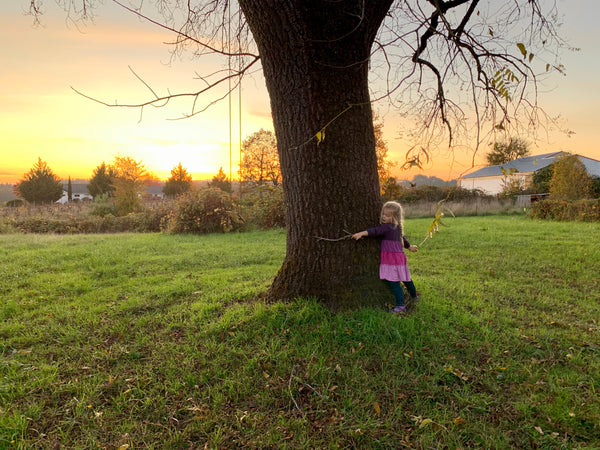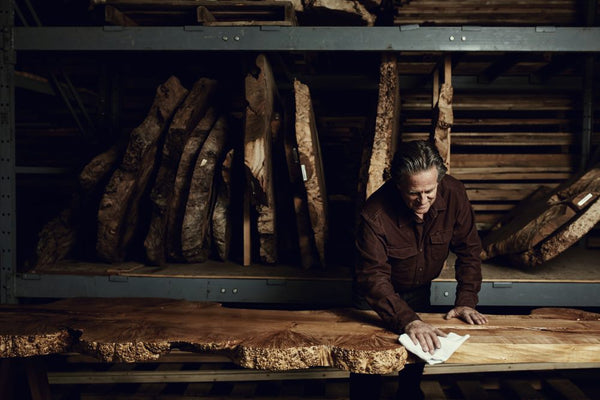Biophilia is the hot new design trend with its “roots” in the natural world! This newly established set of design techniques is putting people before profits in design and construction, and we are here for it! This is not just “another green building standard”, that we have seen come and go. It is an evolving understanding of just how interconnected humans are with the natural world.
We knew it! Here at CS Woods, we are experts in the subject.
Biophilic theory and principles have been a disparate gathering of feelings and ideas tossed around for years. But, with new scientific data in hand, design professionals and researchers are refining the concepts, putting together guidelines and presenting them as a newly refined set of tangible and definable goals called biophilic design. The main concept is that by incorporating elements of nature into the human built environment, it is possible to affect the health and wellness of that environment's occupants.
There are three pillars of Biophilic Design: Nature in the Space, Nature of the Space and Natural Analogues.
- Nature in the Space is literally incorporating nature into the space by adding wood, water, and plants to an indoor environment.
- Nature of the Location is about the orientation of a building within its surroundings, awareness of windows and light, and how spaces within are positioned and designed to create a more comfortable layout.
- Natural Analogues are the way that furnishings, building features and fixtures that can be made from the natural world, like trees or emulate an out of doors experience like clouds or water

Biophilic design isn’t a green building credit based standard, certification or placard, so it has taken longer to take hold, rise in popularity and prove its worth. But, in this new era of design and building, the benefit of investment in ourselves and our people has finally proved a turning point. Biophilia tenets lend themselves to adaptability, creative application, and a more piecemeal approach with each additional element and moment providing an ever growing benefit.
The concepts are, for lack of a better word, natural! Many green standards have confused and fatigued the design and construction world, and while highly valuable in their application, often are intangible to the long term occupants of a space. This concept feels obvious, and puts people and their health first. It clearly places high value on occupant well-being, making them feel that they are one of the top priorities in design. This is an investment in people that companies and families have been looking for for years.

Biophilia feels obvious, as humans are drawn to nature and natural things, but the building and design community are only now really embracing it as an important tenant in all spaces. Studies are showing that being around trees and nature in general lowers stress levels, and that employees are more productive, hospital stays are shorter and patients use less medication, and student absenteeism is reduced when biophilic design is used. The compelling data encourages new spaces to set strong biophilic goals and quickly move toward adapting biophilic design into older spaces. Using wood is one of the strongest visual biophilic cues. It is through the warmth of wood that those goals can be achieved.
Wood offers the following biophilic benefits:
- Stress Reduction: Wood's natural appearance and texture have a calming effect on people, helping to reduce stress and anxiety levels.
- Connection to Nature: Incorporating wood into interior design creates a sense of connection to nature, which has been shown to enhance mood and productivity.
- Biophilic Aesthetics: The warm and organic aesthetics of wood contribute to a sense of comfort and coziness, making spaces more inviting and enjoyable.
- Positive Psychological Impact: Exposure to natural materials like wood can elevate mood and foster a positive psychological outlook.
- Enhanced Productivity: Biophilic elements, such as wooden furniture or finishes, have been associated with increased productivity and creativity in work environments.
- Reduced Heart Rate and Blood Pressure: Being in environments with wood elements can lead to a decrease in heart rate and blood pressure, promoting relaxation and well-being.
- Increased Connection with Surroundings: Wood products can help people feel more connected to their surroundings, whether it's in a residential or office setting. Incorporating wood into indoor spaces can be a simple and effective way to introduce biophilic design principles, fostering a healthier and more harmonious relationship between humans and their living or working environments.
We are experts in biophilic products and applications and look forward to helping you easily bring biophilic design to fruition. Our product is unique in that it is renewable, sustainable, carbon negative, recyclable, and 100% biodegradable. We create products that exist in harmony with our natural environment while working at a standard of quality that lasts lifetimes, seeking to design spaces and products that are mindful, ethical and biophilic, grounding you in the natural world. Let us help you understand wood and wellness and how to specify custom wood applications for your projects.

Looking for more information on Biophilic Design:
14 PATTERNS OF BIOPHILIC DESIGN: Improving Health & Well-Being in the Built Environment - https://www.terrapinbrightgreen.com/reports/14-patterns/

